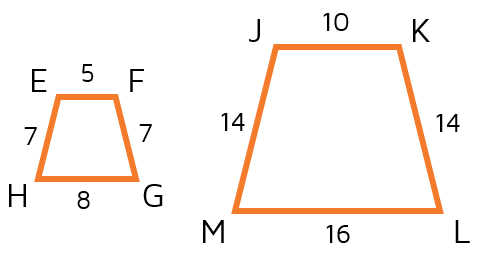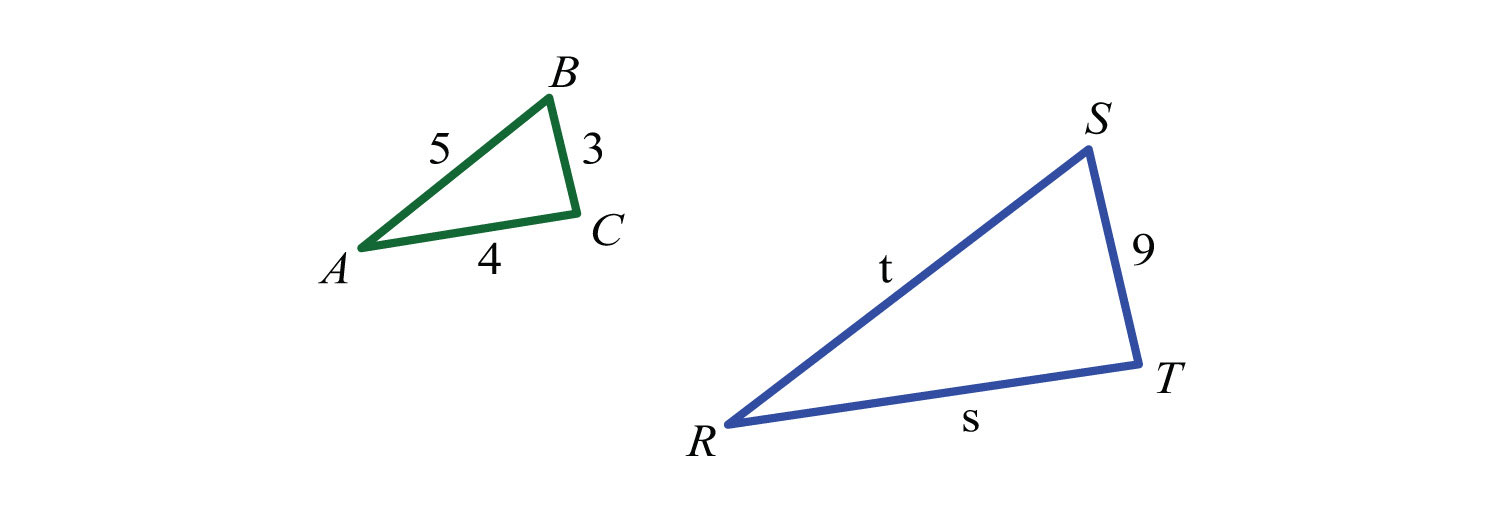To "flip" a figure over a line
Reflection
True or False? Dilations always make a figure smaller.
False
Is a dilation of 7/5 an enlargement or reduction?
Enlargement (Gets bigger)
Give the dimensions of another rectangle that is similar to these two rectangles.
When drawing dilations, what points have to be on rays from the center of dilation?
The corresponding vertices or corners of a figure.
To "slide" a figure.
Translation
A dilation might change the size of a figure's side lengths but never the _______.
angles or shape
What transformations can be used to prove similarity.
List them all!
1) Translations
2) Rotations
3) Reflections
4) Dilations
Point A has the coordinates (4, -3). What is the scale factor used if the new coordinates are (2, - 3/2)?
Scale factor = 1/2 or 0.5
Complete the sentence. Corresponding sides of similar figures are ______________________
Proportional
To "turn" a figure clockwise or counter clockwise
Rotation
Dilations always produce ___________ figures.
similar
If the scale factor is greater than 1 (ex:2) then the dilated image is ______________ from the original figure.
Enlarged
Congruent figures are _____ similar.
(sometimes, always)
always
Similar or not similar?
Not similar - angles are not the same.
When we describe a translation we need to be sure to say:
1) Direction
2) Distance
Dilations need these two things.
1) Center Point of Dilation
2) Scale Factor
If the scale factor is less than 1 (ex:1/4) then the dilated image is ____________ from the original figure.
Reduced
Similar figures are ____ congruent.
(sometimes, always)
sometimes
Find the scale factor. Figure EFGH is the original.

Scale factor = 2
Describing a rotation requires these three things.
1) Center (Point)
2) Rotation angle (Degrees)
3) Direction (Clockwise or Counterclockwise)
If a square is dilated using a scale factor of 2, how many times larger will the area of the new square be?
4 times larger
Dilations can result in a congruent figure if their scale factor is this number.
1
These two triangles are similar. Find the missing side lengths.

s=12
t=15
A point has the coordinates (8, -2). What are the new coordinates after a dilation using a scale factor is 1/4 and the origin as the center of dilation?
(2, -0.5)

